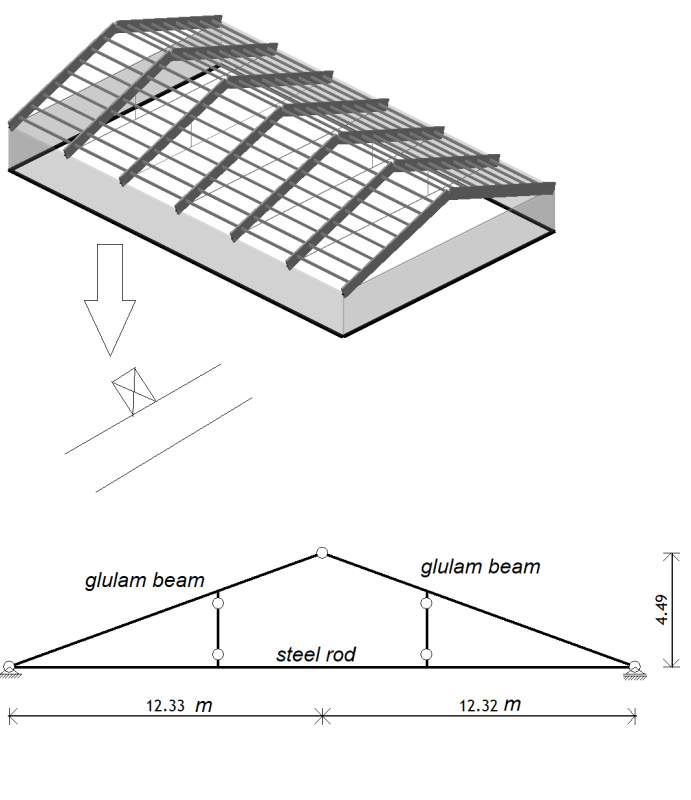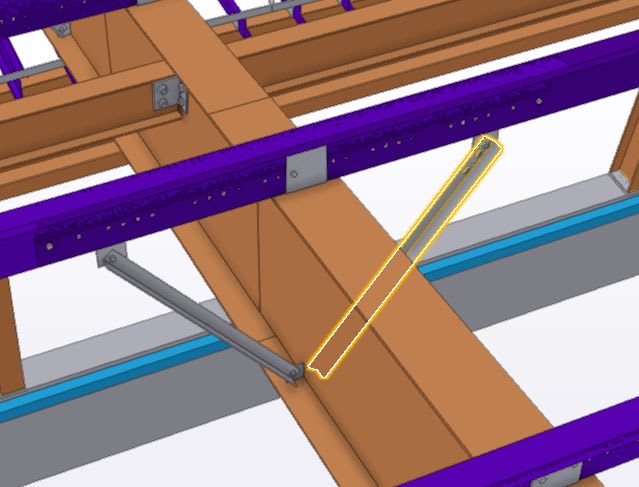Timber roof - main frames (arranged at 6,5 m) - glulam beams b/h = 200/1000 mm supported on RC walls.
On top of glulam beams are timber beams b/h = 100/240 mm arranged at 1m.
Can this beams be considered/act as lateral supports for glulam beam buckling verification?
Thank you for help.

On top of glulam beams are timber beams b/h = 100/240 mm arranged at 1m.
Can this beams be considered/act as lateral supports for glulam beam buckling verification?
Thank you for help.


